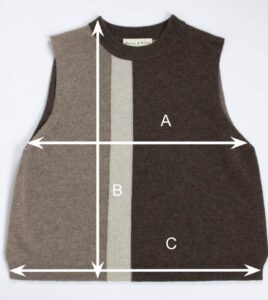What Is Real Cashmere and How to Tell It Apart
Table of contents
- Quick and Easy Cashmere Tests
- The Reference Test
- The Feel Test
- The Stretch Test
- The Look Test
- The Flame Test
- The Lab Test
- Wrapping Up
When we talk about real cashmere, we mean material that is 100% pure cashmere, without any additions of other wools or synthetic materials. Cashmere is known for its luxurious qualities, but unfortunately, its popularity has led to many imitations.
As long as the label clearly states that an item isn’t 100% cashmere, there’s no issue. However, not all labels are transparent. So, how can you tell if a cashmere scarf is authentic? Thankfully, there are reliable ways to determine if your cashmere is the real deal.
How to Test Cashmere?
Cashmere is celebrated for its softness and comfort. It doesn’t irritate the skin, making it a favorite for people seeking cozy yet luxurious clothing. If you find that your cashmere feels scratchy or irritating – even after proper washing and care – it could be a sign that it’s not pure.
Before diving into more complex methods, start with these simple tests.
Quick and Easy Tests to Check if Your Cashmere Is Fake or Authentic
1. The Reference Test
Here’s a little trick to ensure you always know if your cashmere is the real deal. Simply order a cashmere scarf from Oats & Rice and use it as your trusty reference wherever you go.
Whether you’re comparing cashmere at a store or at home, having a high-quality piece on hand is the easiest way to tell what’s authentic. Plus, it’s a great excuse to treat yourself to a new scarf!

2. The Feel Test
Gently rub your cashmere against sensitive areas of your skin, such as your neck or inner arm. Authentic, high-quality cashmere should feel smooth and soft, without any roughness or itchiness. If it feels scratchy, it could be low-quality or even fake.
3. The Stretch Test
Carefully stretch a small section of the fabric. Genuine cashmere should spring back to its original shape. If it stays stretched or becomes misshapen, this could indicate a blend with other materials.
4. The Look Test
Take a closer look at the cashmere’s fabric structure, possibly with the help of a magnifying glass. High-quality cashmere has a tight weave, and you’ll notice tiny fibers, about 2mm in length, on the surface. Longer or uneven fibers might signal the presence of other materials. You can also hold the fabric up to light to check for a consistent knit pattern, which indicates quality.
The Flame Test
For a more accurate test, you can try the flame test – a method so reliable that it’s even used in legal settings. Don’t worry, you won’t need to set your scarf on fire. Instead, pluck a small fiber from the fabric and carefully ignite it.
Pure cashmere will burn slowly, emitting a sharp scent reminiscent of burning hair. The fiber will shrink as it burns, leaving behind ash that wipes away easily. If your cashmere isn’t pure, the flame test will reveal the added materials based on these traits:
- Wool leaves gritty ash behind.
- Cotton burns quickly and smells like burning paper.
- Nylon melts instead of burning, with no ash left behind.
- Polyester/Acrylics melt like nylon and release a sweet, chemical odor.
The specific behavior during the test will depend on the material mixed with the cashmere, if any.
The Lab Tests
If you’re looking for a scientific confirmation, cashmere can also be examined under a microscope. This method allows for a closer look at the fiber structure, but certain materials can mimic cashmere, making it difficult to differentiate.
For the most advanced analysis, you’d need access to an Infrared Spectroscope, a machine capable of precisely identifying fabrics. Of course, this might be overkill unless you’re in a lab or have access to one. In most cases, the flame test will give you a clear answer.
Wrapping Up
There are several reliable ways to test the authenticity of your cashmere. Some methods, like the feel and stretch tests, are quick and easy, while others, like the flame test, offer more definitive results. Using a combination of these tests will give you a solid understanding of whether your cashmere is the real deal.
And remember, the easiest way to always know what real cashmere feels like? Keep an Oats & Rice cashmere scarf handy as your trusted reference. Not only does it add a luxurious touch to your wardrobe, but it also serves as the perfect benchmark for spotting authentic cashmere anywhere in the world.




